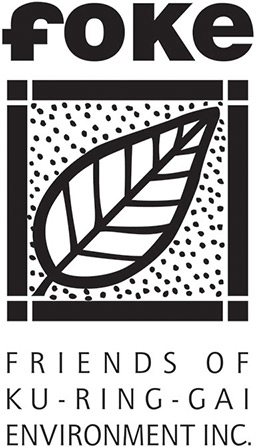
Why isn’t Premier Chris Minns telling the public about the financial costs that the Transport Oriented Development and Low and Mid-Rise Housing will bring to NSW? Some say it will cost NSW $410 billion?
Read FOKE’s letter to Premier Minns, dated 3 March, 2024 asking this important question. See full letter below:

The Premier of NSW
The Hon Chris Minns MP
Parliament House
Macquarie Street
SYDNEY NSW 2000
kogarah@parliament.nsw.gov.au
3 March 2024
Dear Premier Minns
RE: Financing the Transport Oriented Development TOD and Low and Mid-rise Housing Policy
The State Government proposed rezonings raise real questions about how the TOD and Low and Mid-Rise Housing Plan will be financed in totality.
The total rezonings across Greater Sydney, have a target of 530,000 new dwellings by 2043, with 341,000 new dwellings to be built by 2029, with a stretch target of 370,000.
The target of 341,000 new dwellings by 2029 appears to have been taken from a 2022 NSW Productivity Commission report which called for 900,000 new dwellings by 2042. Not the 550,000 that your plan is projecting.
The only projected costs provided by the State Government for the TOD and Low and Mid-Rise Housing we can find is $550 million, for utilities (e.g. water, roads, sewerage). We understand that this amount is only 0.1% of the total cost. There is no explanation in any of the documents where the other 99.9% of the capital is coming from.
So how much will it cost to deliver the TOD and Low and Mid-Rise Housing when all new infrastructure and support services such as schools, hospitals, aged care facilities, fire stations, medical centres, retail shops (supermarkets) etc. are not provided for in the rezoning plan or in the State Government documents? The staff in the Department who drew up the TOD circles do not seem to be bothered about the new infrastructure required for the population increases and the whole new communities that Cabinet is proposing through the NSW Housing Plan. So, who is paying?
Case study:
TOD SEPP Part 1 suggests 47800 new homes – 5975 at each of 8 x 1200 m radius major hubs. These major hubs already have significant mid and high rise. Each major hub represents a land area of 4500000 m^2, and hence the absolute increase in density at each major hub is 1.32 homes / 1000 m^2.
TOD SEPP Part 2 suggests 138000 new homes – 4450 at each of 31 x 400 m radius stations. These stations are currently mostly low density residential. Each 400 m radius station catchment represents 500000 m^2. , and hence the absolute increase in density at each station is 8.86 homes / 1000 m^2.
For example, the strip of land along the railway line between Roseville and Gordon (approximately 5 km) is proposed to be 4 of these minor hubs. But in fact – the proposed additional housing is 18000 – the equivalent of 3 major Part 1 hubs, in an area that is approximately 35% of a single major hub.
The relative increase in density is therefore massively bigger for TOD SEPP Part 2, compared to TOD SEPP Part 1. The absolute increase in the narrow strip of Roseville to Gordon is equivalent to 3 major hubs. Yet only TOD SEPP Part 1 will receive the benefit of a proper masterplan process, and none is deemed necessary for TOD SEPP Part 2 locations.
Using publicly available demographic data on typical occupancy rates of apartments and age profile distributions, TODD SEPP Part 2 could deliver an extra 36000 residents just in this narrow strip (not including the extra residents’ other changes might yield), of which approximately 5500 would be school age.
Typically, the public and private senior schools (7-12) in this area have enrolments of the order 1000-1500. The primary schools (K-6) are of the order 500-700. The equivalent of 5-6 new schools (or increased capacity at other schools) would be required just for this narrow strip alone.
Our analysis as to the total cost of the NSW Housing Plan is $410 billion.
$266 billion in capital is required to fund the first 341,000 dwellings from 2024-2028.
- 341,000 dwellings over 5 years are 1,311 dwellings per week.
- This number is 3 times the number of dwellings built in NSW on average over the last decade.
- With an average construction of $780,000 per dwelling (based on ABS data from 2022).
- Capital required for 1 week’s construction is 1,311 dwellings *$780,000 per dwelling = $1.023 Billion per week.
- 5-year cost = 341,000 dwellings *780,000 = $266 Billion.
$147 Billion in capital required for the balance 189,000 dwellings from 2029-2042. - 15-year cost = 189,000 dwellings *$780,000 = $147 Billion
At a cost of $410 Billion the TOD and Low and Mid-Rise Housing, is more than the nuclear
submarines ($300 Billion), is 25% of GDP, is 11% of all Superannuation in Australia.
Our questions are:
How does the NSW Government propose to fund the new infrastructure and services within Ku-ringgai let alone all the other areas targeted in the TOD Part 1 and Part 2 programme?
How much will it cost to deliver the TOD and Low and Mid-Rise Housing Plan in totality? Has the NSW Government had the Housing Plan costed? Who is paying?
Have the Federal Government reviewed the total cost of the NSW Housing Plan?
Looking forward to an expedited reply before 1 April 2024, providing substantive analysis and costings of the NSW State Government’s Housing Plan in respect of the TOD and Low and Mid-Rise
Housing Plans.
Yours faithfully
Kathy Cowley
PRESIDENT
cc Mr Matt Cross MP, Member for Davidson
cc The Hon Alister Henskens SC MP, Member for Wahroonga
cc The Hon. Paul Fletcher MP, Member for Bradfield
cc The Hon Scott Farlow MLC, Shadow Minister for Planning
cc Mayor and Councillors Ku-ring-gai Council
cc Mr David Marshall, Acting General Manager, Ku-ring-gai Council
Why isn’t the SMH acknowledging the research by economist Cameron Murray who dismantles the Auckland density myth HERE
